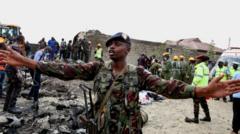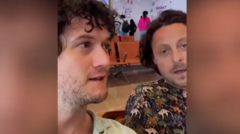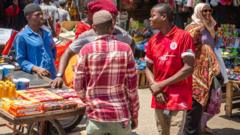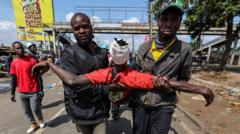A BBC Africa Eye investigation into the sex trade in Maai Mahiu, Kenya, has uncovered disturbing evidence of child prostitution. Undercover reporters infiltrated the industry, revealing how madams manipulate and exploit children as young as 13. Despite substantial evidence, police have made no arrests, raising concerns about systemic failures in addressing child sexual abuse in Kenya.
Investigative Exposé Unveils the Harrowing Truth of Child Prostitution in Kenya

Investigative Exposé Unveils the Harrowing Truth of Child Prostitution in Kenya
A recent undercover investigation has exposed the involvement of women known as "madams" in the child prostitution trade in Maai Mahiu, Kenya, revealing shocking truths about the exploitation of minors in this transport hub.
A recent undercover investigation conducted by BBC Africa Eye has uncovered the disturbing reality of child prostitution in Maai Mahiu, a key transport hub in Kenya. This transit town, just 50 kilometers east of Nairobi, is notorious for its sex trade, where women called "madams" are implicated in the exploitation of minors as young as 13.
The investigation involved two undercover reporters posing as sex workers eager to learn the practices of these madams, spending months infiltrating the local sex trade. Their secret footage revealed the blatant manipulation and trafficking of girls, with one madam, identified as Nyambura, openly admitting to using sweets to lure and control them. She shared harrowing details of a 13-year-old girl who had been involved in the trade for six months.
Despite providing all gathered evidence to the Kenyan police in March, there have been no arrests made so far. Convictions related to child prostitution are notoriously rare in Kenya, largely due to the reliance on testimonies from minors, who often fear retaliation.
In-depth footage captured intimate moments between the madams and the vulnerable children, highlighting the dangers these minors face. Nyambura mentioned that prostitution has become normalized in Maai Mahiu, largely fueled by the presence of truck drivers. Another madam, Cheptoo, boasted about the profits made from selling young girls, emphasizing the clandestine nature of the operations.
The circumstances surrounding child prostitution are dire, with no recent statistics available on the number of children exploited in Kenya. Previous estimates suggested that around 30,000 children were involved, highlighting the extensive nature of this issue.
A former sex worker known as "Baby Girl" now provides refuge for escaped children in Maai Mahiu, offering them solace and support. Her experience, spanning four decades in the sex industry, has led her to shelter multiple young women who were once involved in prostitution. They share harrowing accounts of abuse and abandonment, leading them to this brutal trade.
As these resilient young women rebuild their lives, learning skills such as photography and beauty therapy, Baby Girl emphasizes the urgent need for community outreach and education on the dangers of unprotected sex, especially given the high HIV rates in Nakuru county. However, her outreach efforts face impending cuts due to decreased USAID funding, raising concerns for the vulnerable population depending on her assistance.
The stark reality remains that these young girls continue to navigate a perilous journey of abuse and exploitation, yet they find hope in the support of advocates like Baby Girl. Their stories call for urgent attention to the rampant issue of child trafficking and sexual abuse in Kenya, challenging local authorities to take action before more lives fall prey to this dark trade.




















